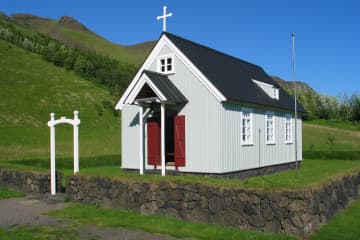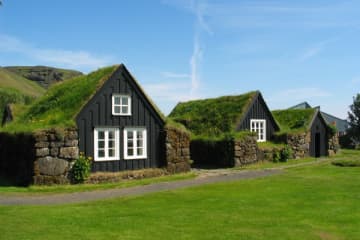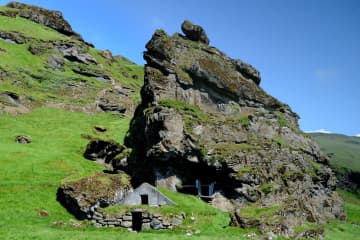Skogar church

Skógar was a church site from shortly after the adoption of Christianity in Iceland around 1000 AD; the first church was built in about 1100 and dedicated to St. Nicholas. In the early centuries, Skógar Church was wealthy, but after the Reformation of 1550, it declined. The last church at Skógar was a modest wooden church built in the mid-19th century and demolished in 1890.
The present Skógar Church at the museum site was designed by architect Hjörleifur Stefánsson and consecrated in 1998. The exterior structure is new, while most interior fittings are from Kálfholt Church, built in 1879. The windows, which date from 1898, are from Gröf Church. One of the bells, which dates from about 1600, is from Höfðabrekka, the other from Ásar, Skaftártunga, from 1742. All the ecclesiastical goods date from the 17th and 18th centuries. The altarpiece is from Ásólfsskáli Church (1768), the candelabra from Steinar Church and Eyvindarhólar Church (16th century). Various religious ceremonies take place each year in Skógar Church. The church is non-denominational and welcomes all Christian ceremonies.
The present Skógar Church at the museum site was designed by architect Hjörleifur Stefánsson and consecrated in 1998. The exterior structure is new, while most interior fittings are from Kálfholt Church, built in 1879. The windows, which date from 1898, are from Gröf Church. One of the bells, which dates from about 1600, is from Höfðabrekka, the other from Ásar, Skaftártunga, from 1742. All the ecclesiastical goods date from the 17th and 18th centuries. The altarpiece is from Ásólfsskáli Church (1768), the candelabra from Steinar Church and Eyvindarhólar Church (16th century). Various religious ceremonies take place each year in Skógar Church. The church is non-denominational and welcomes all Christian ceremonies.







